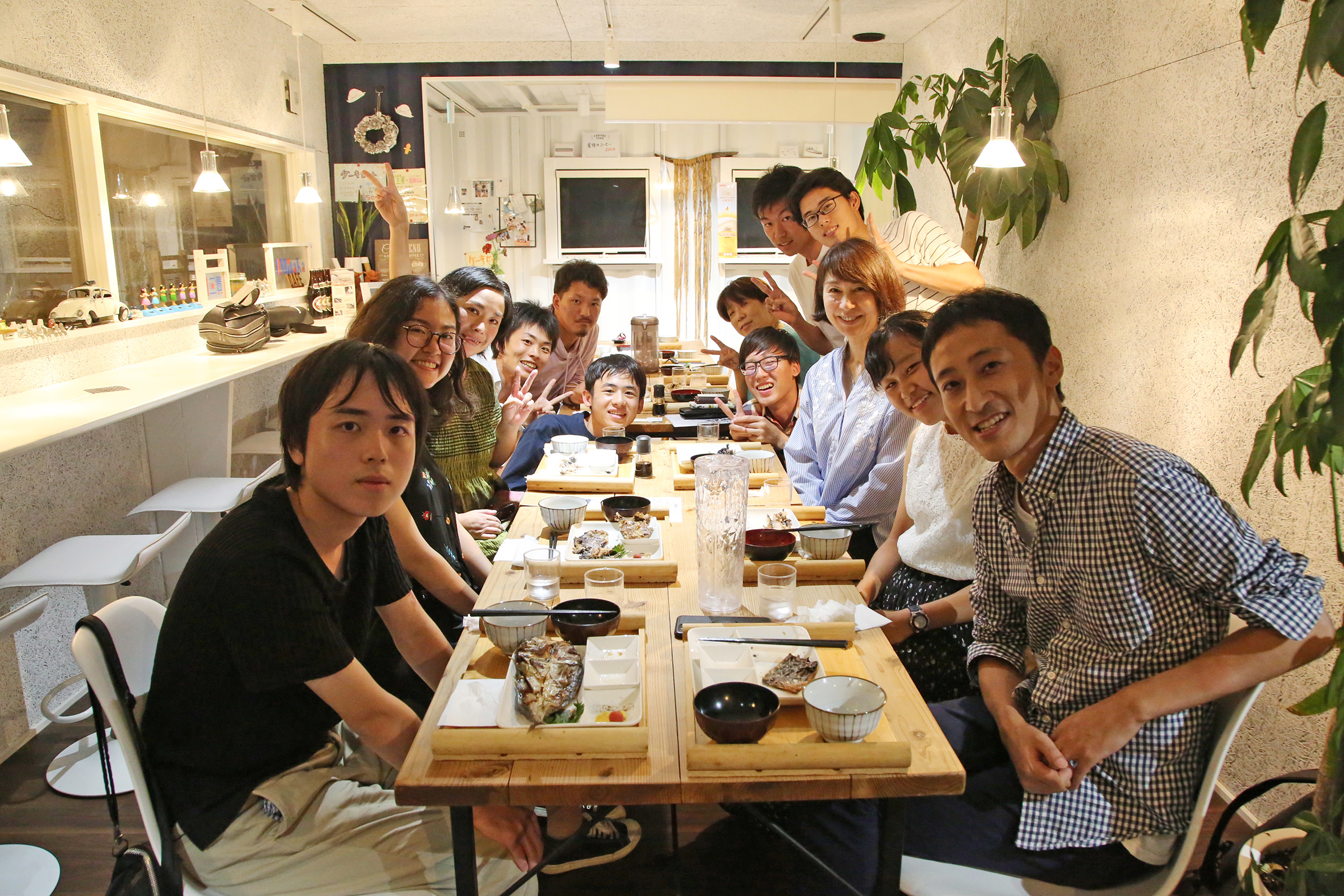- >
- Nanavi News
- >
- Yamaguchi Eating Communication x University of Tokyo Study Tour” to Nagato City
Yamaguchi Eating Communication x University of Tokyo Study Tour” to Nagato City
-
Last updated:
Aug 26, 2019
-
About the writer:
Nagato Tourism Convention Association

What is Yamaguchi Eating News?
Yamaguchi Eat Tsushin" is an information magazine that spotlights producers active in Yamaguchi Prefecture and introduces the attractiveness and particulars of their foodstuffs. The magazine features not only a booklet, but also a set of foodstuffs delivered as a set, allowing you to enjoy the taste of Yamaguchi while appreciating the producer's thoughts and stories.
In the first issue in March 2016, Choshu Kurokashiwa, a local chicken produced in the Mukozugu district of Aburaya, Nagato City, and Hyakusyo no Shio were introduced, followed by dried horse mackerel, kensaki squid, and other foods from our city that have graced the pages and been delivered to our readers.

Photo: Image (from Yamaguchi Eating Communication website)
This time, under the title of "Yamaguchi Eat Tsushin x University of Tokyo Study Tour," students from the University of Tokyo visited Yamaguchi Prefecture for a four-day, three-night tour. Based in Hagi City, the tour visited spots related to "food" including Nagato City and Abu Town.
Eight students went to Nagato City
On Tuesday, August 20, the second day of the tour, the eight visitors to Nagato City were divided into two groups for interviews, one in the Dori/Senzaki area and the other in the Mukozugu area.
Mr. Ando of "Kaisendon Ajito," located in Senzaki Bar of Roadside Station Senzaki Kitchen, guided us to visit a flatfish and tiger puffer fish farm, which are used for the rice bowls. We also visited the "Whale Museum" in the Tori area, which once prospered from old-style whaling.



In the Mukozugu area, they visited "Hyakusoan," which produces "Hyakuso salt," and also visited "Dining Bar Zen," a Spanish bar run by the company, which opened last month. Ms. Inoue, the proprietress of Hyakusyoan, explained to the group that they were able to experience the changes that have taken place since the restaurant was first introduced in "Yamaguchi Eat Tsushin" about three years ago.

We also interviewed not only the people who create "food" in Nagato, but also Mr. Murao, a member of the Regional Development Cooperation Volunteers who launched the local media "Nagatoto" this year. Currently, the website and free paper are used to introduce the stories behind the "food" in the city, including beloved stores and menus.

Exchange of opinions at "Hamachaya Sanki" in the evening
After the hearing, everyone gathered at Hamachaya Sangi, a container café on Qinghai Island. Adjacent to this cafe is "Kimura Suisan," whose dried horse mackerels were once featured in the same magazine.

While tasting their prized dried and fried fish, the students reported on the day and exchanged opinions with those who are active in Nagato City. A few people rolled their eyes at the size of the fish and its flavor.


Staff from the Nagato City Tourism & Convention Association were also present for the exchange of opinions, and the discussion was particularly lively regarding efforts to disseminate information on the "Nanavi" tourism website and the "Naga Trip" that combines food and experiences.

Many of the students were visiting the area for the first time on this tour, and they told us about the charms of the area from the outside and the challenges they experienced firsthand.
From the mountains to the sea, Nagato City still has an abundance of "food" to be proud of. We hope you will visit our city again someday and experience the "delicacies" that are unique to this town.



